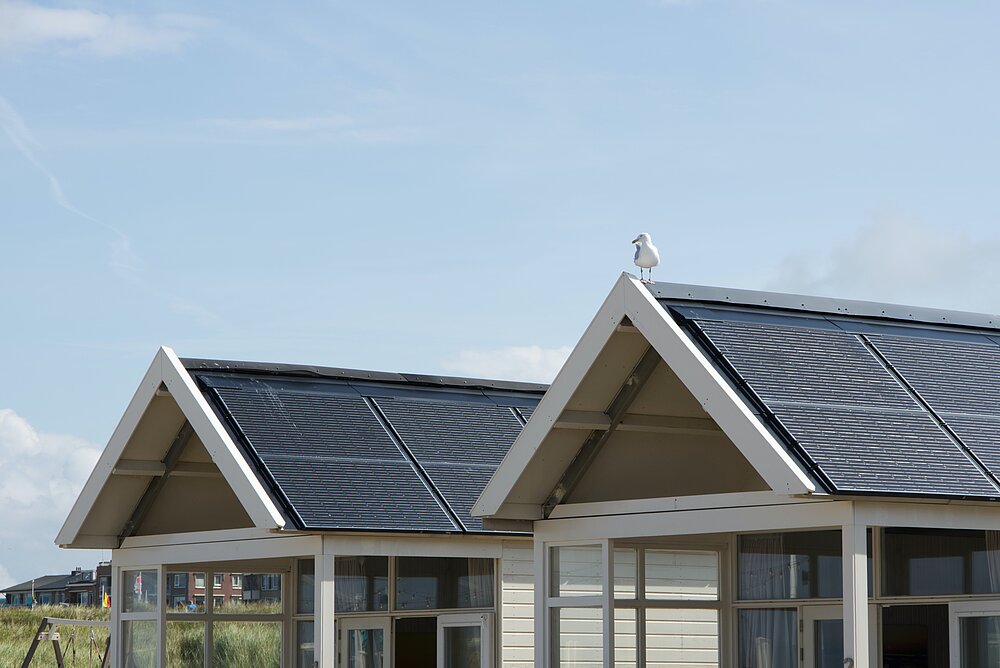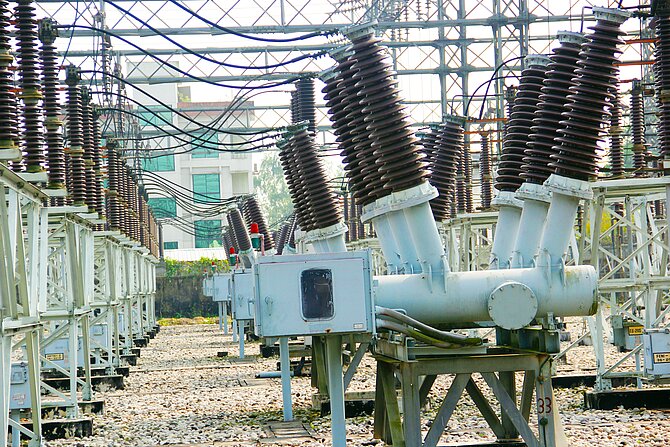Find out today what the legal world will be talking about tomorrow.
30.06.2023
Installing Additional Photovoltaic Roof Systems in Contractual (Construction Law) Structure

Currently, adding photovoltaic systems (hereinafter: "PV systems") on the roofs of existing buildings is experiencing a market boom. This is especially true in the industrial and commercial sector. The self-generated electricity can be fed into the grid in return for compensation, or even sold directly on the market. It also offers the opportunity to reduce electricity supply costs and to achieve sustainability goals.
This article provides an overview of some basic legal issues that may arise when entering into a contract for the addition of a PV system.
Purchase contract or work contract?
The legal classification of the contract is the first question to be clarified. It is very important as the type of contract determines which regulatory scheme is applicable, and in some cases, these differ considerably. Contractors' insurances, rights of termination, the right to partial payments, an acceptance, etc. only exist in the law governing work or construction contracts, not in the law governing the sale of goods. The inclusion of the German Construction Contract Procedures (VOB/B) could also be invalid in the case of a purchase contract, because the VOB/B is tailored to the law on contracts for work and services.
The classification is unproblematic if the PV system is installed by the purchaser himself. In this case, a sales contract exists. The legal classification is also clear if delivery and assembly are ordered separately. In this case, there is a purchase contract for the delivery of the components and a contract for work and services for the installation.
In practice, a contract is usually concluded with a supplier for delivery and installation as a complete solution including commissioning.
Whether this contract is to be regarded as a purchase (with installation obligation) or as a contract for work and services is not determined by its designation as a "purchase contract" or " work and services contract." Instead, it depends on which of the services to be provided (purchase or installation) is the main focus and thus gives the contract its decisive character. In the case law, the value ratio of the purchased modules and the assembly service is taken into account and whether the assembly service predominates in view of the installation and adaptation work provided by the craftsman. This may be the case, for example, if the production of a larger functional PV system is owed, also taking into account the static requirements of the building.
In principle, it should be noted that the greater the individual effort of the installation work, the more likely it is that a contract for work and services is to be assumed. However, it is always necessary to examine the individual case in order to then adjust the regulation regime in the contract accordingly. In order to avoid uncertainties, it may also be advisable to agree on essential regulatory content in individual contracts.
Which warranty period does apply?
For the determination of the warranty period, it does not primarily depend on whether it is a purchase contract or a work and services contract. This is because both the law on sales contracts and the law on work and services contracts generally stipulate a 5-year warranty if the addition of the PV system is a fundamental renewal of another structure (see section 1 below) or if the PV system itself constitutes a structure (see section 2 below). Otherwise, only a 2-year warranty period applies.
- In order for the addition of a PV system to constitute a fundamental renewal of another structure and thus for the 5-year warranty period to apply, the following requirements must be met according to case law:
→ A fixed and permanent connection of the plant to the building must be established and this must be associated with a significant intervention in the substance of the existing building. When this is the case depends on the specific project. No general statements can be made for PV systems. However, the following also applies here: the more comprehensive the installation, the more likely there will be a fixed connection.
→ In addition, the system must fulfill a function for the building. The BGH (ruling of October 9, 2013 - VIII ZR 318/12) denied this for PV systems in which the electricity generated is fed into the grid and not used for the building to which the system is connected. In this case, the system would only serve the acquisition interests of the owner.
This argumentation has been countered by another senate of the BGH in a "more recent" decision (BGH, judgment of June 2, 2016 - VII ZR 348/13). It is of the opinion that it is sufficient if the building serves as the supporting object for the PV system. Whether this means that the earlier divergent view has been abandoned is an open question.
- Whether PV roof systems themselves can be regarded as structures has also not yet been conclusively clarified. Opinions differ in the legal literature. However, case law (currently) tends predominantly towards not considering PV systems attached to a building as structures. This is justified by the fact that the system itself has no direct connection to the ground.
As a result, whether the addition of a PV system to a building constitutes a renewal of the building - triggering the long limitation period of 5 years - depends largely on the individual case, and primarily on the complexity of the installation. Caution is required if the PV system is to serve exclusively to feed the energy generated into the power grid against payment. According to the (earlier) decision of the BGH cited above (ruling of October 9, 2013 - VIII ZR 318/12), only a 2-year warranty may then apply.
In light of this, it is probably advisable to make an express contractual provision regarding the limitation period for the warranty for defects.
Does the construction contract law (sections 650a ff. of the German Civil Code (BGB)) apply?
The application of construction contract law (sections 650a ff. BGB) initially requires that a contract for work and services be present. However, this alone is not sufficient. It must also be a "construction contract". A construction contract is a contract for the construction, restoration, removal or conversion of a "building". The term "building" is therefore again decisive. This is determined - according to the predominant view - in accordance with the warranty provisions. This means that if the 5-year warranty period applies (and a contract for work and services is to be assumed), it must be assumed that the construction contract law with the provisions of sections 650a ff. of the German Civil Code (i.e. in particular the client's right to issue instructions) also applies.
Obtaining ownership of the PV system?
When work is carried out on a building, the owner of the building generally acquires ownership of the building materials by operation of law, as these become an integral part of the property or building upon installation (cf. sections 946, 94 BGB).
Whether this can also be assumed in the case of the addition of a PV system on the roof is again determined by the individual case.
The legal acquisition of ownership requires a fixed connection between the PV system and the building. A "fixed connection" is to be assumed within the meaning of sections 93, 94 BGB if separation would involve disproportionate effort, in particular if it would lead to damage to the object. This is often negated by case law in the case of the addition of PV systems on roofs, since here dismantling is regularly possible without damaging the roof. However, the concrete individual case is decisive.
In addition to the extent of any dismantling, the extent of electricity fed into the public grid can also be an indication for or against the existence of an essential component. In particular, if the electricity generated is exclusively or predominantly fed into the public grid, PV systems do not regularly constitute an essential part of the property. The situation may be different if the PV system serves exclusively to supply electricity to the building on which the PV system was erected.
The question of the acquisition of ownership is not only of importance in the event of a possible sale of the property, but also, in particular, in the event of the connection of the erection contract in connection with the due date of (progress) payments.
If the purchaser automatically becomes the owner of the components used by operation of law, progress payments do not constitute unsecured advance performance. However, if this is not the case, there is a risk of unsecured advance performance, which should be avoided by drafting the contract accordingly. If progress payments are envisaged, the transfer of ownership should therefore be secured by other means if possible. In particular, it should be borne in mind that contractors regularly acquire their goods themselves only subject to retention of title. It is therefore recommended, at least in the case of larger payments on account, that the details of the transfer of ownership be regulated separately.
Authors



